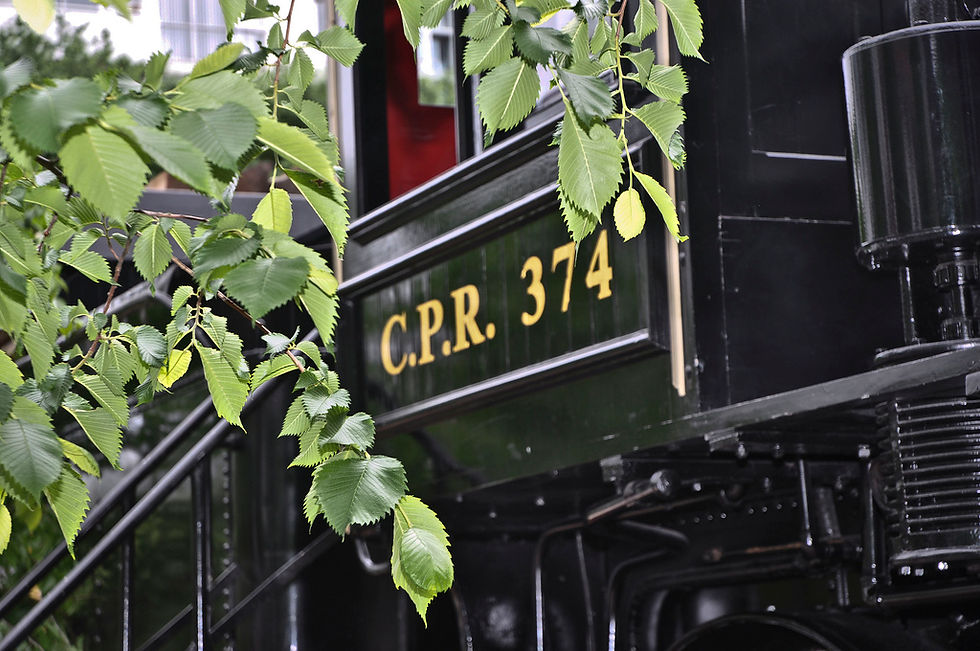Railway Series Part 3: The Railway and Yaletown
- Glauce Fleury
- Oct 2, 2013
- 2 min read
Updated: Jun 17, 2023
On a visit to Yaletown, Vancouver’s main warehouse district at the end of the 1800s, we notice the area has different traits compared to some other areas of town. Perhaps most of us don’t know the reasons, but Yaletown’s history and the Canadian railway are closely related. Changes started to come after the agreement between the British colonies and the rest of Canada, in which the federal government stated that it would build a railway to join the east to the west coast.

“Yaletown got this name because a lot of the railway workers from the little village of Yale settled in this area,” says William Johnston, director of the West Coast Railway Association (WCRA) and the volunteer in charge of the Engine 374 Pavilion. Besides, the equipment and repair shops that existed in Yale were also transferred to Vancouver. Located on the Fraser Canyon, Yale is one of BC’s most historic communities. It was on the route of the Gold Rush in the second half of the 1800s.
From the 1880s to the beginning of the 1900s, business boomed in the province and the development of the railway shaped Yaletown. Nowadays, what we see is a revitalized area that once was a place for processing, repackaging and warehousing goods. All the industrial characteristics appeared after the Last Spike of the CPR—a milestone in Canadian history—which was driven at Craigellachie, sealing the agreement with BC.
In 1886, the first train came to the Pacific Coast, arriving at Port Moody. “This town was not an industrial centre; it had no deep harbour,” says Johnston. Then one year later, the main line was extended and Engine 374 pulled the first passenger train to Vancouver, which had become a city in 1886.
The director of the WCRA says the first passenger train arrived at the place where Waterfront Station is located nowadays, in Gastown, one of the most famous areas in Vancouver. How the railway yards were transferred from there to Yaletown is the theme of my next blog post.
Photo by Andy Cassidy
Originally published as part of the railway series by the Roundhouse Community Arts & Recreation Centre.



Comments